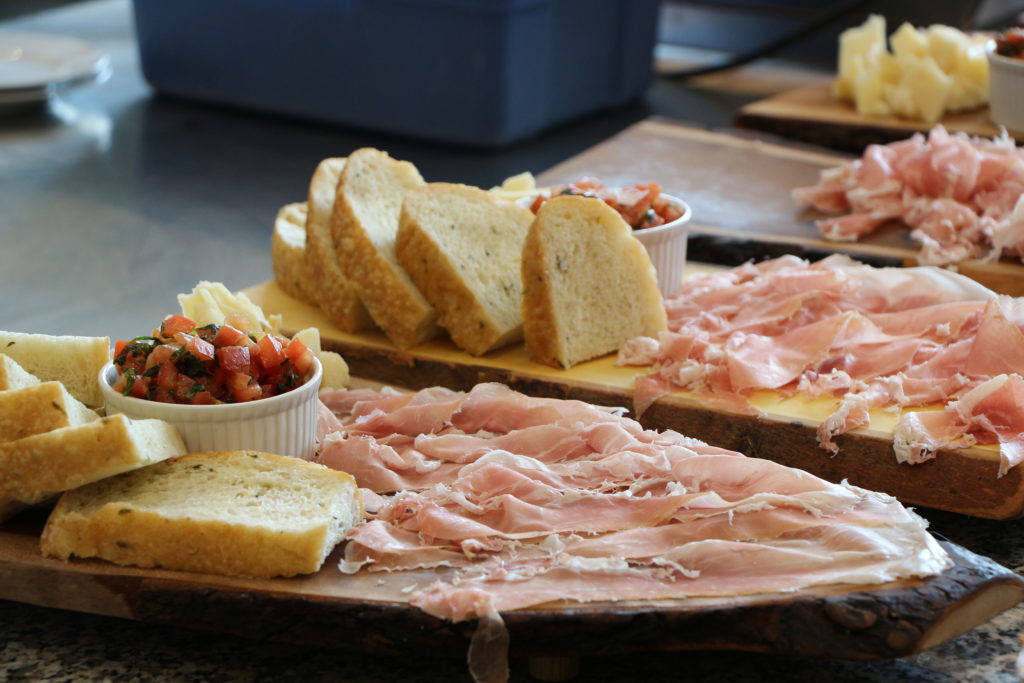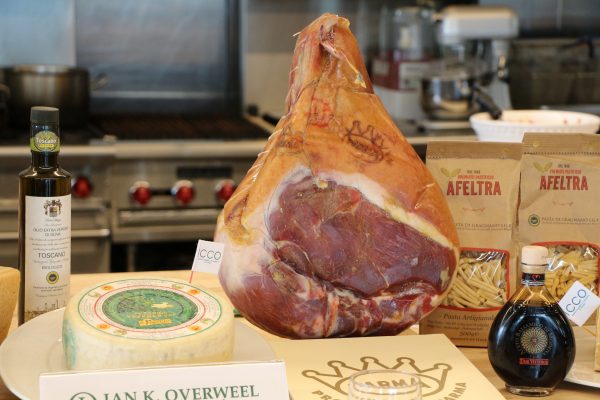It is often said that imitation is the highest form of flattery. When it comes to the authenticity and quality of Italian products however, it is anything but flattering. Each year, trade in fake Italian goods costs the economy billions of euros. The number of “fake” products in the food market is staggering with imitations stealing a large amount of shelf space from authentic products. These counterfeit goods are typically accompanied by aggressive price lowering strategies which entice consumers in purchasing these fraudulent products.

Recognizing the severity of situation the European Union instituted legislation in 1992 to protect the reputation of regional foods, promote rural and agricultural activity, help producers obtain a premium price for their authentic products, and eliminate the unfair competition and misleading of consumers by non-genuine products of inferior quality or of different flavour. This legislation protects the names of wines, cheeses, hams, sausages, seafood, olives, olive oils, beers, balsamic vinegar, regional breads, fruits, raw meats and vegetables. With the introduction of these new laws also came a designation system to assure the authenticity of European foods.

This system was the subject of a Master Class I had the opportunity to attend recently at the Faema Culinary Academy, hosted in partnership with the Italian Chamber of Commerce of Ontario (ICCO) and the True Italian Taste Project (a project financed by the Italian government to promote and safeguard genuine Italian agri-food products in North America and Mexico). Among all the countries in the European Union, Italy has the largest number of designated products.

We were guided through two of the designations of the system by Chef Roberto Fracchioni and treated to an incredible meal featuring several coveted True Italian products; Prosciutto di Parma, Grana Padano, Parmigiano Reggiano, Pecorino Toscano, Gorgonzola, Piave, Abate Pears, Piedmont Hazelnuts and Aceto Balsamico di Modena.
The aforementioned products were either DOP or IGP. What do those acronyms mean exactly? Allow me to share with you my learnings.

DOP – Denominazione di Origine Protetta or Protected Designation of Origin. This certification means that products such as cured meats and cheeses are made according to traditional methods in a specific geographic region in Europe. There are rigorous criteria that must be met by producers in order to achieve DOP status. The requirements are based on the concept of terroir or tipicita’ in Italian with strict adherence to every stage of production from inception to completion (including packaging) is executed in a specific region or area. The entire supply chain is controlled and monitored. DOP products are always identified by a red and yellow seal of certification.
A prime example is the Prosciutto di Parma. True PDO Prosciutto di Parma is made with 4 ingredients: pork, sea salt, air and time. It can only be produced in the countryside surrounding the city of Parma in North-Central Italy where the dry, sweet air creates the perfect conditions for the natural curing of the hams. Prosciutto di Parma can only be produced from Italian-born and bred pigs raised according to the highest standards, on which they are monitored, inspected and traced. A final quality test by independent inspectors then dictates if the prosciutto is fire branded with the world-famous, five-pointed Parma Crown identifying it as genuine Prosciutto di Parma. The adherence to strict standards however does not end there. Prosciutto di Parma must be sliced in front of the consumer with the branding in evidence. Once the prosciutto is sliced to the point where the branding appears on the skin, the retailer must cut around that to ensure the seal is still evident. This is part of the guarantee of origin and traceability.

IGP – Indicazione Geografica Protetta or Protected Geographic Indication. This is a guarantee of origin for foods produced in specific areas. This designation is not as stringent as the DOP. It applies to products whose qualities and/or reputation are derived from their geographical origin or whose production or processing occurs in a given geographical area. The major difference with IGP products is that only part of the production needs to have taken place in the designated area. IGP products are always identified by a blue and yellow seal.
The Piedmont Hazelnut is an example of an IGP product. The name indicates a specific variety of hazelnut, the Tonda Gentile Trilobata grown in the province of Cuneo. While the hazelnut is cultivated in this particular region it is used in the confectionary industry throughout Italy.

In addition to the seals of certification, agri-food products may also be labeled “Made in Italy” or “Product of Italy”. This is a labelling requirement that began in 1992 in the fashion industry which later translated into the food sector. This labelling is governed by a legislative decree and was designed to help fight misrepresentation and misuse of Italian products. This requirement also takes into account words or symbols that are often utilized in labeling as well, such as, the image of the Italian flag or use of the word “style”.
The main distinction between these two labels is the requirement that for something to read “Made in Italy” is must be completely produced in the Italian Peninsula. on the other hand means that part of the production occurs in Italy.
The designations and labeling requirements are critical in the education of consumers on the true authenticity of Italian products. These Italian Agri-foodstuffs are produced with real love and passion encompassing centuries old traditions which must be respected and valued. It may seem overwhelming but taking the time to read product labels and look for indications of authenticity aids in the fight against food fraud. This is also incredibly important in understanding pricing structure; true Italian products may come with a heftier price tag, but you can be guaranteed that only the highest quality ingredients are being used and that the entire supply chain is being controlled and monitored.
Of course, the best type of learning is a hands on one and we were fortunate enough to enjoy a menu crafted on Italian quality by Chef Roberto Fracchioni. Our three-course meal consisted of:

An antipasto of Prosciutto di Parma, Bruschetta, Grana Padana and Focaccia. Before serving the appetizer course he explained how to properly slice Prosciutto di Parma and that is extremely thin, in fact, the rule of thumb that he pointed out was that you should be able to read a newspaper through it.

The main course featured a risotto trio, one made with Parmigiano Reggiano, one made with Pecorino Toscano and my personal favourite of the three, one made with Gorgonzola.

To cap things off we enjoyed a sweet and savoury dessert of shaved Abate Pears and Piave Cheese with toasted Hazelnuts and finished with a drizzle of Aceto Balsamico di Modena.
A delectable representation of True Italian Taste. Buon Appetito!
*Photography courtesy of Vito Bruno







